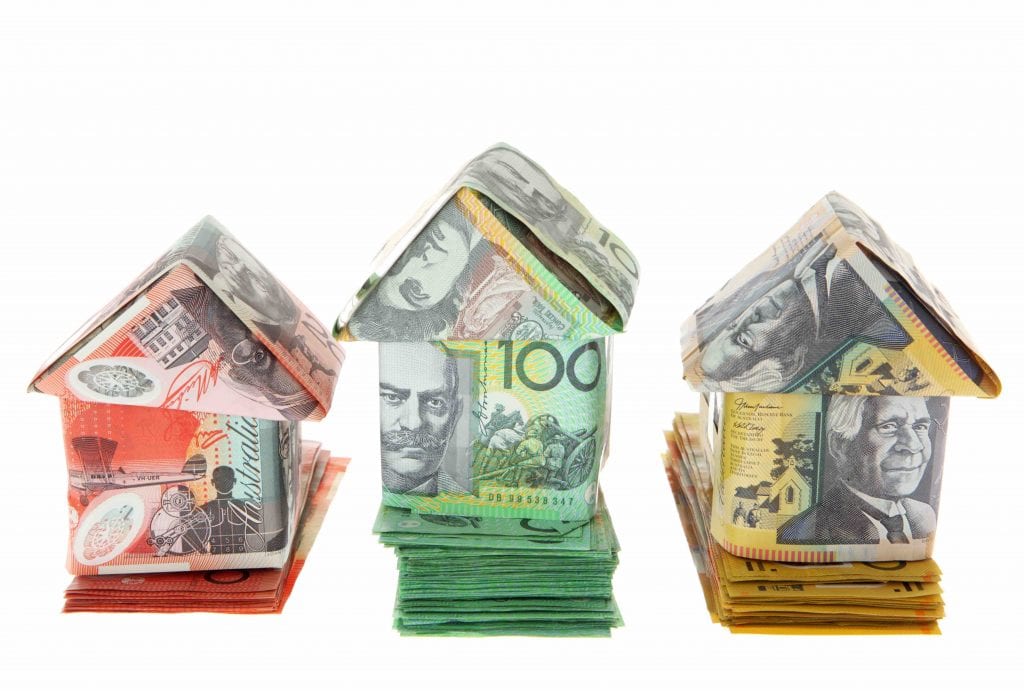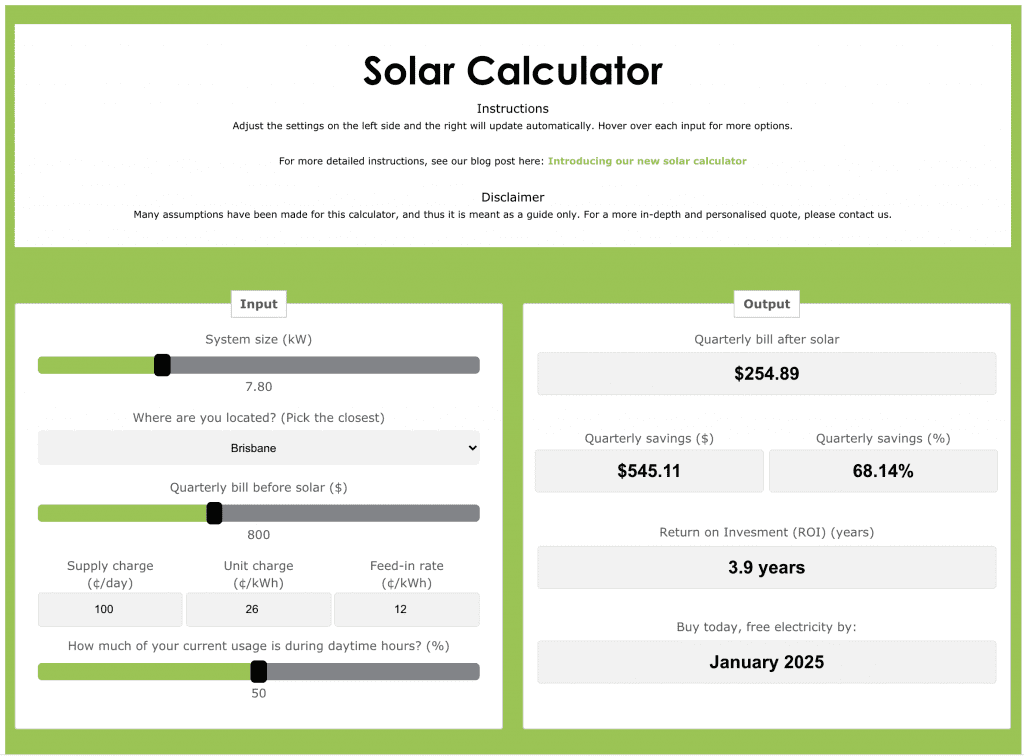How does solar feed in tariff work?
Simply put, the solar feed in tariff works by you selling excess energy back to your electricity supplier and receiving money for what you sell.
This article covers exactly how the solar feed in tariff works and touches on all the most common questions associated with the solar feed in tariff. The solar feed in essentially just means you can sell excess electricity back to your retailer in exchange for money.
There are lots of different tariffs available depending of where you live, who suppliers the electricity and who the retailer is that sends you your bills. Some areas will have access to multiple retailers with varying feed in tariffs and others will only have one to choose from. In some cases, you may not be allowed to sell any electricity back to the grid and therefore will not have access to nay feed in tariffs. In other cases you may only be allowed to export a set amount, which is called export limiting.
Unless you installed solar a long-time ago, the current feed in tariffs available are always worth less than what you are being charged for electricity. This is why it is always advisable to try and use as much of your solar power as possible, and sell less back, in order to maximise savings – more on this later.

Summary of how the solar feed in tariff works:
You can sell your excess solar power to the grid and get paid for it
Depending on where you live, you get different tariffs for the electricity you sell
Some places you have a choice of different retailers, and others you do not
Some solar systems can only sell limited amounts back, some can sell as much as they can back and some are not allowed to sell anything at all
More details follow
How does solar power feed back into the grid?
This is an important question and probably the one we need to address firstly as it is commonly misunderstood. The best way to explain this is: when you feed solar back to the grid, it is not tallied up at the end of a day, week or billing period like some people think. Everything is measured in real time as energy is produced. So, the misconception is that if you produce 24kWh in a 24hour period, and use only 20kWhs in the same period, you will pay nothing for the energy you use and then get credits for the extra 4kWhs. Whereas in the real world you would have produced the 24kWhs from sunrise to sunset and consumed the 20kWhs over a full 24-hour period.
When we say it is measured in real time that just means that if you produce 2kWhs of solar between 1pm and 2pm but only use 1kWh in that same window of time, then you would have sold back 1kWh in that space of time.
The first chart below shows the early morning solar production and how you will start using the energy and then start selling it back. The second chart shows a full day of solar production and household consumption with solar feed in.
You may also find it useful to understand how your electricity usage works and how to understand your power bill.


Summary of how solar power feeds back into the grid:
Solar is fed back into the grid as it is created – it is not tallied up at the end of the day, week or billing period
This means you sell energy back in real-time, so producing the same amount as you use over 24 hours doesn’t necessarily mean you are cost neutral
The charts above show how this works with real-life solar monitoring
How do the savings work for solar feed in tariffs?
Click the image below to try our solar savings calculator.
Let’s assume the energy you use costs $0.25 per kWh and the energy you sell back is worth $0.10 per kWh. These are fairly common averaged out rates.
Based on an assumed 6.6kW (6,600 watts) solar array an average production of solar energy is approximately 26kWh (kilo-watt hours) per day.
Lastly, we will assume you are using 50% of the solar energy produced and exported the remaining 50%.
Using those three assumptions, the calculation would look like this:
50% of 26kWh = 13kWh. So, for this exercise you will be using 13kWh of solar energy, and exporting the other 13kWh to the grid.
13kWh x $0.25 = $3.25 – This is the portion of solar you have consumed at home.
13kWh x $0.10 = $1.30 – This is the portion you have sold to the grid.
Total savings per day = $4.55
Annual savings = $1,660.75
If you would like to save more money, then you would try to use more of the solar power because it is more valuable to use it at $0.25 per kWh, compared to selling it back at $0.10 per kWh.
To further clarify, let’s take the same solar production as above – 26kWh of solar per day. But this time you use 80% of the solar and only sell back 20%. If that was the case your savings would work out this way:
80% of 26kWh = 20.8kWh. So, for this exercise you will be using 20.8kWh of solar energy and exporting the other 5.2kWh to the grid.
20.8kWh x $0.25 = $5.20 – This is the portion of solar you have consumed at home.
5.2kWh x $0.10 = $0.52 – This is the portion you have sold to the grid.
Total savings per day = $5.72
Annual savings = $2,087.80
As you can see the second saving example is quite a bit higher than the first. With the same amount of solar produced, the second example has saved $427.05 more in one year.
The key then is to try and use as much of the solar power created as possible. This can be done by using things like washing machines and dishwashers during solar energy hours or putting things like hot water systems or swimming pool pumps on a timer, so they run during the day when the solar panels are producing energy.
For more basic information about how solar works, check out our Solar Guide For Beginners.

Summary of how the savings work with the solar feed in tariff:
You get more value when using solar power, compared to selling it back
The only exception is if you are on an older Government funded high feed in tariff (explained below)
The calculations above show how the savings can work for a 6.6kW solar system
Who pays the solar feed in tariff?
Your energy retailer will pay for the solar you sell back. Depending on where you live, this could be a range of different providers who service different areas. Some of the larger ones are Origin Energy, AGL, Energy Australia and Alinta. These retailers are like a shop front in some ways. They are the people who charge you for energy and also the ones who will pay you when you export it. They are not however, usually the ones who actually generate the electricity.
These companies are retailers, who buy energy from producers, who are usually Government owned corporations. There are exceptions to this, where the people sending you your bills are the same organisation that actually generates the electricity (Ergon in QLD for example) but this is rare these days as most networks have sold the billing rights to various retailers.
Summary of who pays the solar feed in tariff:
The people who send you your energy bills will pay you for the electricity you sell back
These credits will help offset the energy you use when solar is not working
Typically, your energy retailer (who sends the bills) doesn’t actually generate the electricity or pay for the feed in, they are just the people who bill you
What happens when the solar feed in tariff ends?
If you are a solar customer who was installed many years ago, you may still be on a high feed in tariff which is funded by State Governments. In QLD for example, there is a $0.44 feed in tariff which does not expire until 2028. This $0.44 is funded by the QLD Government and was introduced to accelerate the initial uptake on solar panels. If you are lucky enough to be one of these customers, you may also get paid a top up from the retailer and some people are receiving up to $0.60 as a feed in rate.
When this feed in tariff expires you will revert back to whatever is on the table from your available retailers at the time. The Government funded part will not be there anymore, and you will receive what the retailers are able to offer only. The value of this will depend on where you live and what retailers are offering at the time.
If you are a solar customer on a standard feed in tariff, then you are subject to what your energy retailer is offering. It is a good idea to check this annually and make sure you are on the best deal. Feed in tariffs do fluctuate all the time so staying on top of it is important if you want to make sure you are saving the most you can.
Summary of what happens when the feed in tariff ends:
If you are on a Government funded feed in tariff and it expires, you will revert back to the standard offer from your energy retailer
If you are not on a Government funded feed in tariff then you should check annually to make sure you are getting the best deal

What is the best solar feed in tariff?
The best feed in tariff will also depend on a few variables: where you live, how big your solar system is and how you use energy.
There are many different tariffs available and some will suit people who feed lots of solar back as the feed in part if higher. Whereas others will suit people who sell very little back and still use a lot of energy as the amount they charge you is lower.
A good site to use to compare is https://wattever.com.au/compare/
Make sure you have a recent power bill handy as you can type in exactly what you are using and how much you are selling back to make sure the best deal for you shows up!
Summary of the best feed in tariff:
Depending on where you live, the feed in tariff fluctuates
The best overall deal will also depend on how much energy you use and how much solar you sell back
The comparison site above will help you find the best deal!
Overall summary
The solar feed in tariff forms a significant part of the overall calculation for how much money you will save with solar. Some people can access larger feed in tariffs and others cannot get anything at all. It all depends where you live and therefore who generates and sells you the electricity from the gird.
For more information please feel free to get in touch and we can advise exactly what is available for you.
For some useful tips, check out these links:











